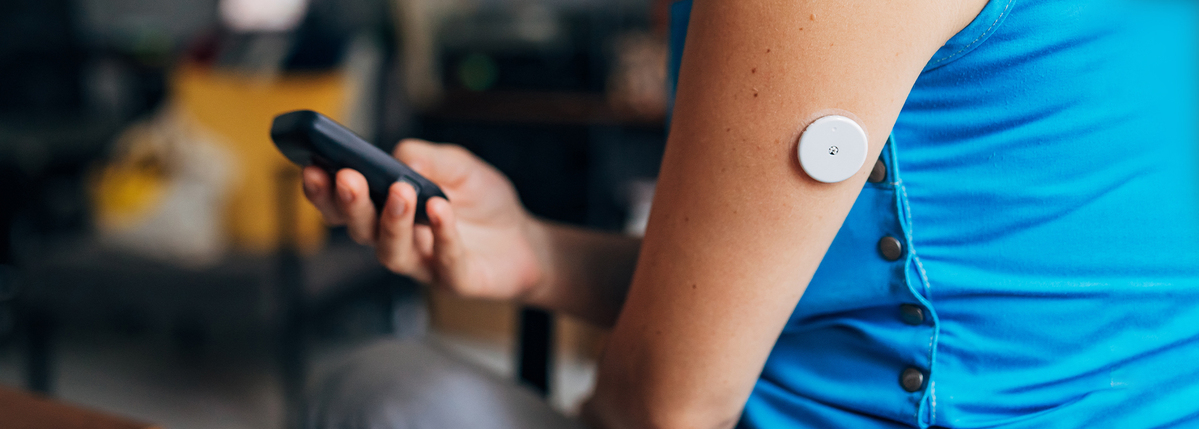CGM Shopping Guide
More and more people with diabetes are switching to continuous glucose monitors (CGMs)—a small wearable device that tracks your blood glucose levels in real-time throughout the day and night.
CGMs can provide invaluable data to help you make important decisions about your diabetes management.
Ready to give your blood glucose management a high-tech update? We’ve created this guide to help you decide which CGM may be right for you.
The basics
There are several CGMs on the market but most are:
- Made up of three parts: Most have a sensor (which sits in the skin), transmitter (sits above the skin) and receiver (a handheld device that receives blood sugar data—although you may be able to use your smartphone).
- Easily applied: CGMs can be placed in several areas of your body, usually with an easy-to-use applicator that comes with it.
- Waterproof: Most CGMs are safe for use in showers and while swimming.
- Have alarms: Some can alert you if your blood glucose levels are low or high.
- Need replacement: The lifespan of a CGM can vary from 10 days up to 180 days.
How do I get one?
The first step to getting a CGM is to talk to your healthcare provider. You will need a prescription. Depending on your insurance, you may be limited in which CGM models are covered under your plan.
Insurance coverage for CGM is expanding, including for people covered by Medicare, Medicaid and TRICARE. If your insurance does not cover a CGM, you can still get a sample directly from the manufacturers through programs like Hello, Dexcom and My Freestyle.
Which CGM is right for me?
Here are some questions to think about when considering your CGM options:
- What does my insurance cover?
- Will my doctor need to file an exception? If your insurance is denying coverage, your doctor can still file for an exception to your insurance provider.
- What can I afford to spend monthly on CGM-related costs?
- How often will I have to change sensors? This will directly impact how much you spend on sensors.
- Will I need to purchase a handheld reader or is the device compatible with my smartphone?
- Do I want a CGM to connect to my insulin pump?
- Do I want additional features like alarms for highs and lows? This is helpful for people who live alone or want alerts while they sleep.
| Brand | CGM | Specifications | Estimated Cost* |
| Abbott | Freestyle Libre 14-day |
|
Most commercially insured patients end up paying between $0 to $75 per month for FreeStyle Libre sensors, and no more than $65 for a FreeStyle Libre 2 reader. Get a Free Trial sensor. |
| Freestyle Libre 2 |
|
||
| Freestyle Libre 3 |
|
The FSL3 is now available for purchase at your local pharmacy! Most commercially insured patients end up paying between $0 to $75 per month for FreeStyle Libre 3 sensors. Get a Free Trial sensor. | |
| Dexcom | G6 |
|
Sensor and transmitters price vary by insurance coverage, but can range from $300-500. |
| Medtronic | Guardian Connect |
|
With Medtronic’s CGM Access discount, $180 per transmitter and $60 per box/month. |
| Senseonics | Eversense |
|
Estimated cost is around $533 a month, not including procedural costs. |
*These estimated costs are not exact, so always talk to your provider and insurance company to verify your individual cost.
Editor’s Note: This piece mentions Abbott, Dexcom and Medtronic, active partners of Beyond Type 1 at the time of publication.
Educational content related to continuous glucose monitors is made possible with support from Abbott, an active partner of Beyond Type 1 at the time of publication. Editorial control rests solely on Beyond Type 1.





